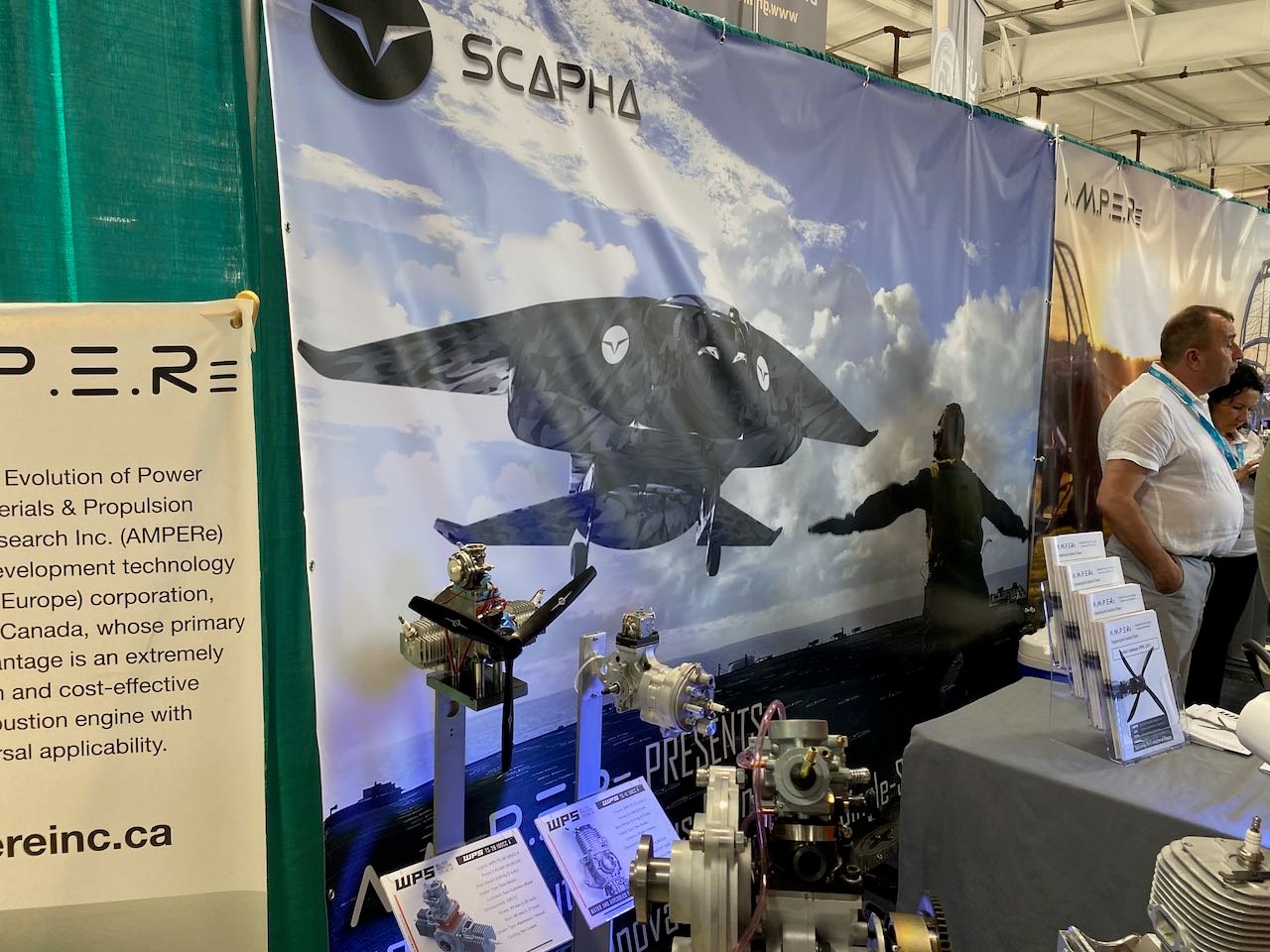Click Here to View This Page on Production Frontend
Click Here to Export Node Content
Click Here to View Printer-Friendly Version (Raw Backend)
Note: front-end display has links to styled print versions.
Content Node ID: 418978
Advanced Materials and Propulsion Engineering and Research’s (AMPERe) Woj-Tech Propulsion Systems (WPS) and Scapha Autonomous Flying Vehicle divisions are co-developing an autonomous, all-composite VTOL for the advanced air mobility market, with first flight planned for late next year. According to the Canada-based companies, the Scapha VTOL will be able to run on hydrogen fuel and thus be a zero-emissions vehicle.
WPS will supply the three 300-hp single-stroke engines that are set to power the aircraft, which illustrations show as having two in-wing ducted fans along with an aft-mounted pusher-prop ducted fan. The engines will be scaled-up versions of WPS’s TS-20 single-stroke engine, which it is currently flying on a 53-pound VTOL unmanned aerial system (UAS).
AMPERe COO Luke Wolk told FutureFlight on April 13 at the Sun 'n Fun Aerospace Expo in Florida that the four-place Scapha will take to the air later next year, but will likely be tethered for initial trials. Wolk said the company is not yet releasing more detailed performance and range data for the VTOL, but a brochure AMPERe is handing out at the show promises the Scapha as an aircraft with “long range, reliability, and safety” that will be able to serve the “urban transit, city-to-city, and utility/delivery” markets.
AMPERe is displaying about a dozen of WPS’s single-stroke engines of various sizes and power ranges this week at Sun 'n Fun, which runs through April 18 at Lakeland Linder International Airport. It claims these engines are 70 percent more efficient and 80 percent lighter than current gasoline-fueled internal combustion engines. Further, the company said its single-stroke powerplants emit 80 percent fewer pollutants and 33 percent fewer greenhouse gases than current engines, while at the same costing 50 percent less to built and 33 percent less to run.
Meanwhile, the companies plan to fly a two-seat, all-composite Hoverbike—also powered by a larger variant of the TS-20 engine—in September. That design is essentially a jet-ski-like vehicle with horizontal-ducted fore and aft fans, each with contra-rotating propellers inside.
Two of the companies’ other VTOL small-UASs—meaning they weigh less than 55 pounds—are currently in service “with an unnamed NATO military,” Wolk said.
